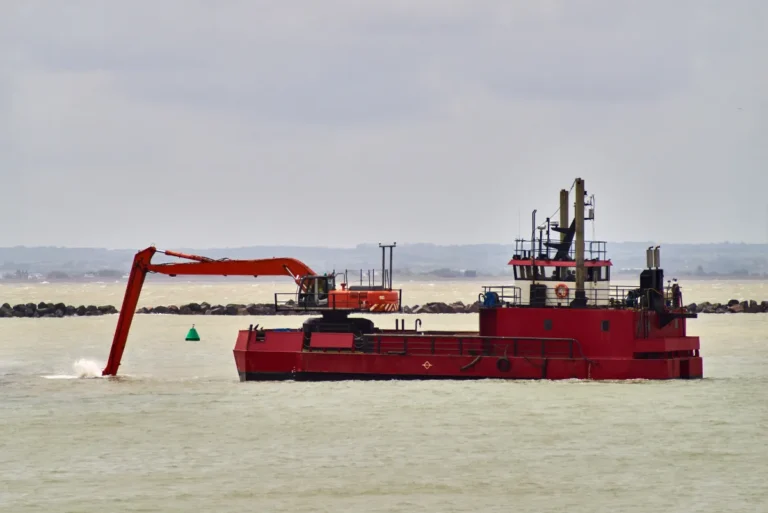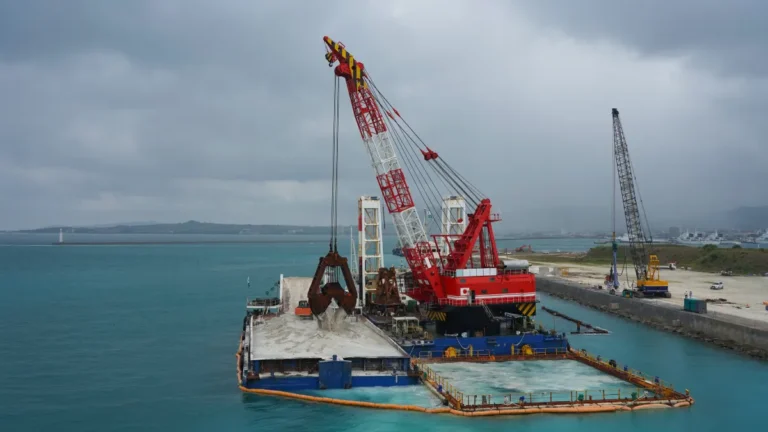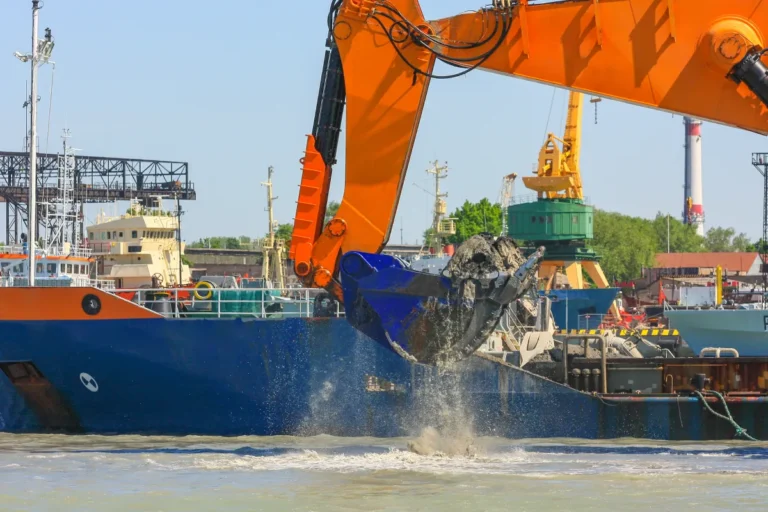Dredging plays a critical role in maintaining the health and functionality of water bodies across a range of industries, from environmental restoration and flood control to mining and port operations. At the heart of every successful dredging project is the use of highly specialized dredging equipment engineered to remove sediment efficiently, safely, and with minimal environmental impact. Whether it’s deepening a shipping channel or restoring the depth of an inland lake, selecting the right dredge equipment is essential to achieving optimal results while staying compliant with regulatory requirements.
As sediment accumulates over time in rivers, harbors, lakes, and industrial basins, it can restrict water flow, reduce depth, and pose risks to navigation and ecosystems. Modern dredging equipment addresses these challenges using mechanical or hydraulic systems, each tailored to specific site conditions and project goals. From heavy-duty cutter-suction dredgers to compact lake dredging equipment, the market offers a diverse range of tools designed to tackle varying sediment types, environmental constraints, and operational demands. This article explores how dredging equipment works, its key components, industry applications, and the environmental considerations that shape modern dredging practices.
Dredging Basics
What Is Dredging?
Dredging is the process of removing sediment, debris, and other materials from the bottom of lakes, rivers, harbors, and other water bodies. This operation is essential for maintaining navigable waterways, improving water flow, restoring ecological balance, and enabling construction or reclamation projects. At its core, dredging supports both environmental restoration and commercial activity.
The most common reasons to deploy dredging equipment include:
- Sediment removal to prevent flooding or maintain depth
- Channel deepening for maritime shipping and port expansion.
- Land reclamation for infrastructure and development
- Ecological restoration to improve water quality or habitat health
These applications rely on specialized dredge equipment designed to perform efficiently under different conditions, from confined urban canals to expansive lakebeds.
Mechanical vs. Hydraulic Dredging Methods
Dredging operations typically fall into two main categories: mechanical and hydraulic.
- Mechanical dredging involves physically scooping or grabbing sediment using equipment like clamshell buckets, backhoes, or excavator arms mounted on barges. This method is effective for removing compacted or heavy materials and is often used in smaller or more contained sites.
- Hydraulic dredging uses centrifugal pumps to suck a slurry of sediment and water through a pipeline to a disposal site. Cutter-suction dredgers (CSD) and plain-suction systems are common examples. This technique is ideal for larger volumes, softer sediments, and continuous operations, making it particularly effective for lake dredging equipment applications.
Both types of dredge equipment have their advantages depending on site conditions, sediment type, and project scale.
The Science Behind Sediment Removal
Effective dredging depends on understanding the interaction between sediment characteristics and water dynamics. The type of sediment—whether it’s fine silt, coarse sand, or compacted clay—significantly affects the performance and wear rate of dredging equipment.
Water flow also plays a critical role. Faster currents may aid sediment transport but can reduce suction efficiency or cause resettlement. That’s why modern dredge equipment is engineered to manage variables like suction velocity, impeller force, and slurry density.
Suction and drag forces are central to hydraulic dredging. When properly calibrated, these forces allow equipment to fluidize sediment and transport it without clogging the system. Advanced lake dredging equipment often includes real-time monitoring tools to adjust pressure and flow dynamically, ensuring optimal performance in sensitive or shallow environments.
By leveraging principles of fluid dynamics, today’s dredging equipment can operate more efficiently, with greater precision and reduced environmental impact.
Main Categories of Dredging Equipment

Understanding the different types of dredging equipment is essential when selecting the right solution for a project. Each category is designed for specific tasks, site conditions, and sediment types. Below are the three primary classifications of dredge equipment used across various industries.
Mechanical Dredge Equipment
Mechanical dredging involves the direct excavation of sediment using tools that physically dig, lift, and deposit material. This type of dredging equipment is particularly effective in areas with dense or compacted sediment where precision is required.
Common mechanical systems include:
- Clamshell dredgers – Equipped with large, hinged buckets that scoop sediment and transfer it to barges or disposal sites. They are ideal for urban harbors, berths, and locations where hydraulic methods may be impractical.
- Excavator-mounted buckets – These are standard land-based or amphibious excavators adapted with extended arms or specialized attachments for dredging. They offer versatility in shoreline and shallow-water operations.
- Dipper and grab dredgers – Heavy-duty machines designed for high-efficiency dredging in confined spaces or hard materials. They work well in industrial settings or areas with underwater obstructions.
Mechanical dredge equipment offers precise control and is commonly used where water flow or contamination limits the use of hydraulic systems.
Hydraulic Dredge Equipment
Hydraulic dredging relies on suction to remove and transport sediment as a slurry through a pipeline. This method is preferred for larger-scale projects where speed, distance, and volume are critical factors.
Popular types include:
- Cutter-suction dredgers (CSD) – These combine a rotating cutter head with powerful suction to dislodge and pump sediment. They are widely used in ports, rivers, and reclamation projects.
- Plain-suction dredgers – Suited for fine sediment in open water where cutting isn’t required. These units offer efficient, low-impact dredging.
- Jet-lift and air-lift systems – Use high-velocity water or compressed air to lift sediment. These are often employed in sensitive environments or smaller-scale operations.
Hydraulic dredge equipment is known for its high production capacity and ability to move large volumes over long distances, making it a common choice for coastal and inland waterway projects.
Specialty & Modular Systems
In locations with restricted access or shallow depths, specialized solutions are essential. Lake dredging equipment falls into this category, designed specifically for small water bodies, ponds, and lagoons where traditional dredgers cannot operate effectively.
These systems include:
- Purpose-built lake dredging equipment – Compact, lightweight units with shallow drafts that can maneuver easily in sensitive environments. These are often equipped with environmentally friendly features and minimal ground impact.
- Remote-controlled submersible dredge pumps – Ideal for hazardous or hard-to-reach areas, these pumps can be deployed without human entry and provide precise, localized dredging.
- Amphibious excavators – Machines capable of operating both on land and water, commonly used in wetlands, swamps, and shallow channels.
These modular and specialized forms of dredging equipment offer flexibility, safety, and adaptability, especially in projects with strict environmental or logistical requirements. Whether you’re working in a municipal reservoir or a natural pond, modern lake dredging equipment ensures efficient sediment removal with minimal disruption.
Key Components & How They Work Together
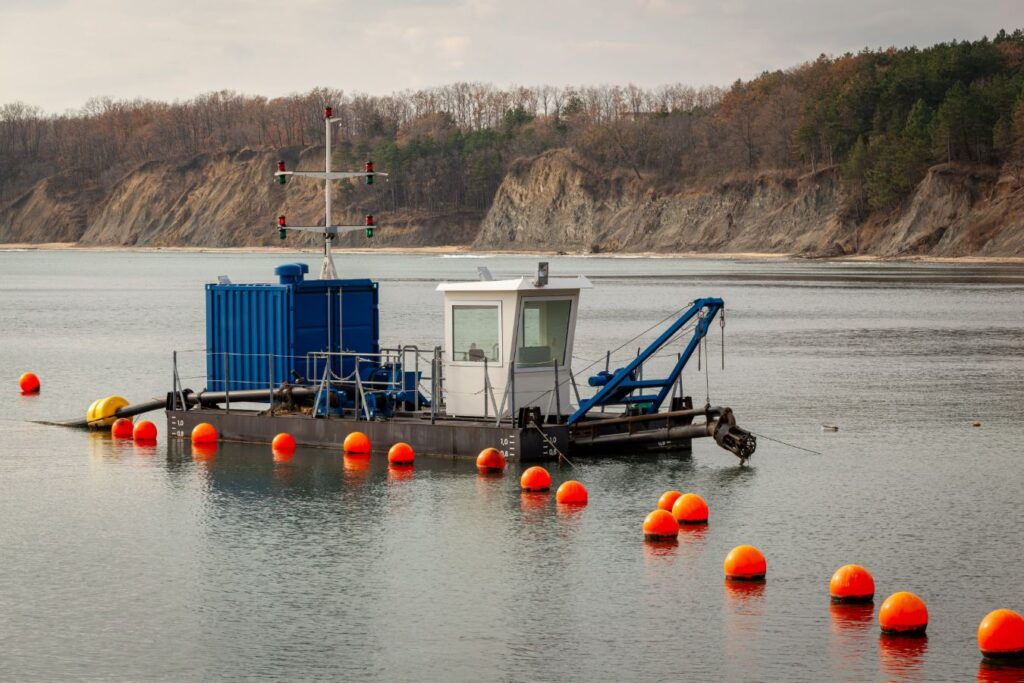
Effective dredging equipment is a system of coordinated components, each designed to handle specific aspects of the sediment removal process. From excavation to discharge, every part plays a critical role in ensuring efficient, reliable, and environmentally responsible dredging. Understanding how these components function together can help operators maximize productivity and minimize downtime.
Cutter Head or Bucket
The cutter head or bucket is the first point of contact with the sediment. In hydraulic systems, a rotating cutter head dislodges and breaks up compacted material, allowing it to be easily suctioned. Mechanical dredge equipment, on the other hand, uses buckets, such as clamshell or dipper-style, to scoop and lift sediment. The choice of cutter or bucket depends on the material’s composition, such as silt, clay, or gravel, and specific project requirements. For instance, lake dredging equipment often features smaller, more agile cutters to handle soft or sensitive materials with minimal disturbance.
Suction Pump
At the heart of any hydraulic dredging equipment setup is the suction pump. This powerful unit creates the vacuum needed to transport a slurry of water and sediment through pipelines. Performance depends heavily on managing variables such as Net Positive Suction Head (NPSH), impeller condition, and flow rate. High-quality dredge equipment incorporates wear-resistant pump designs to handle abrasive materials while maintaining consistent output. Regular monitoring and maintenance of the pump system are vital to ensuring long-term efficiency.
Discharge Pipeline
Once the slurry is drawn in, it must be moved to a designated disposal or processing site via a discharge pipeline. This component must be durable and well-supported, often incorporating flotation devices to keep the line at the proper depth. Proper routing, pipeline lining, and diameter selection all impact flow efficiency and wear resistance. In lake dredging equipment, shorter pipelines with flexible routing may be used to suit tighter project footprints or environmentally sensitive areas.
Power System
The power system drives the entire operation and can be configured as diesel, electric, or hybrid depending on site conditions and sustainability goals. Diesel engines are favored for remote or mobile jobs, while electric systems offer lower emissions for urban or protected areas. Hybrid configurations are gaining popularity for offering fuel savings without sacrificing performance. The power system must be matched carefully to the size and complexity of the dredging equipment to avoid overloading or inefficiencies.
Control & Monitoring Suite
Modern dredge equipment relies heavily on digital control and monitoring systems to maintain precision and compliance. GPS ensures accurate positioning, while sonar and depth sensors help operators visualize the sediment layer and dredging progress in real time. Flow meters monitor slurry movement, aiding in volume tracking and preventing blockages. These systems are especially important in sensitive environments, where lake dredging equipment must minimize environmental disruption while maximizing sediment removal accuracy.
By working in harmony, these core components transform raw mechanical power and hydraulic pressure into a finely tuned sediment management system. Whether operating on a major river or a small inland lake, advanced dredging equipment depends on the seamless integration of these elements to meet project demands effectively.
How Dredging Equipment Operates—Step-by-Step
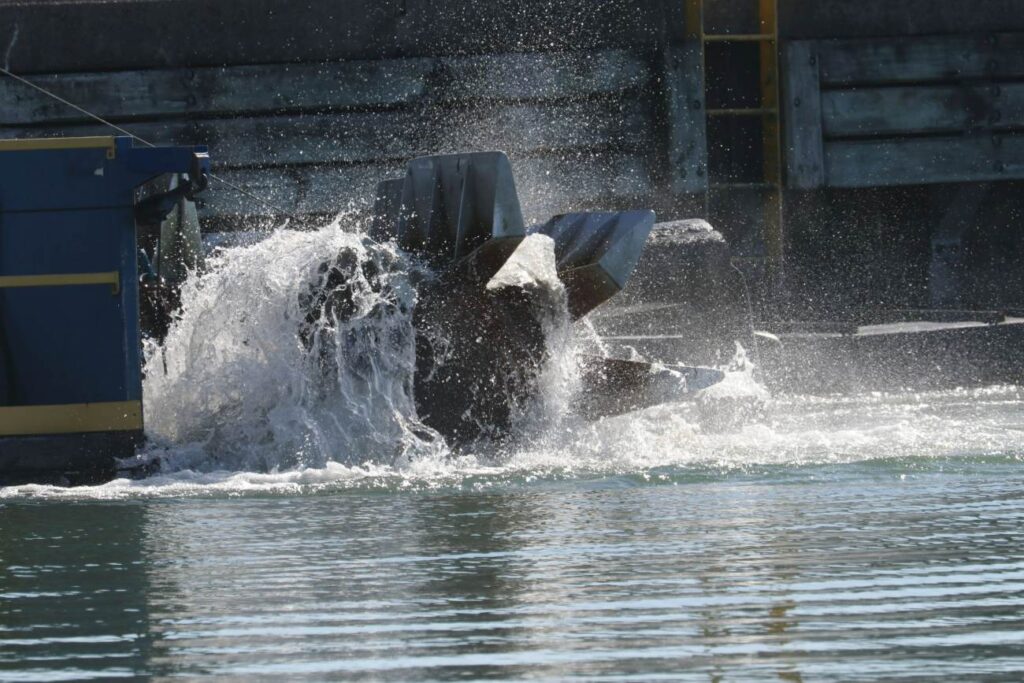
The operation of dredging equipment follows a structured process to ensure efficient sediment removal, environmental safety, and compliance with regulatory standards. Whether the project involves deep harbors or shallow inland lakes, each stage of the operation plays a vital role in the success of the dredging project. Below is a step-by-step overview of how modern dredge equipment functions on-site.
1. Hydrographic Surveying and Project Mapping
Before any dredging equipment is deployed, the first step is to conduct detailed hydrographic surveys of the site. These surveys use sonar and GPS to map the underwater topography, determine sediment depth, and identify any obstructions. This information is used to create a precise dredging plan, including the depth targets, dredge zones, and equipment positioning. For projects using lake dredging equipment, this stage is crucial for navigating confined or ecologically sensitive areas with minimal disturbance.
2. Mobilization and Site Positioning
Once the survey data is complete, the selected dredge equipment is transported to the job site and assembled if needed. Mobilization may involve launching floating dredges, deploying support vessels, and securing anchoring systems. Accurate site positioning, guided by GPS systems, ensures the dredger starts work in the correct location and follows the predefined path efficiently. In smaller operations, especially with lake dredging equipment, modular or amphibious systems are positioned for maximum maneuverability and access.
3. Cutting or Agitation of Sediment on the Waterbed
The actual dredging begins with sediment agitation. For hydraulic systems, a rotating cutter head breaks up the sediment layer, while suction draws the material into the pipeline. In mechanical systems, buckets or clamshell grabs scoop sediment directly from the bottom. The method used depends on the dredging equipment in play and the characteristics of the material—whether it’s fine silt, compacted clay, or rocky substrate.
4. Slurry Transport via Pumps and Pipelines
Once the sediment is dislodged, it’s mixed with water to create a slurry that can be pumped through pipelines to the disposal site. Powerful centrifugal pumps integrated into the dredge equipment maintain flow and pressure, overcoming resistance from pipeline bends and elevation changes. The transport process is continuously monitored for flow rate, pressure, and sediment concentration to maintain operational efficiency. For lake dredging equipment, the transport distance is usually shorter, requiring less energy and smaller pipe systems.
5. Dewatering or Direct Placement of Dredged Material
At the discharge site, the slurry is either deposited directly or sent to a dewatering area where the sediment settles and the water is separated. The method depends on the project goals—whether the material will be reused, stored, or safely disposed of. Many dredge equipment systems include geotextile tubes or settling ponds for environmentally friendly dewatering, especially in regions where space and containment are limited.
6. Post-Dredge Surveying to Verify Depth and Environmental Compliance
After dredging is complete, another round of hydrographic surveys is performed to verify that the target depth has been reached and that all specified areas have been addressed. This stage ensures that the project meets all environmental and contractual requirements. In sensitive habitats or areas using lake dredging equipment, post-dredge assessments also check for turbidity levels, aquatic life impact, and shoreline stability.
Applications Across Industries & Environments
The versatility of dredging equipment makes it essential in a wide range of industries and environmental settings. From industrial-scale operations to small-scale restoration efforts, modern dredge equipment is engineered to meet the unique demands of each application. Below are some of the key industries and environments where this equipment plays a vital role.
Restoration Projects Using Lake Dredging Equipment
Inland lakes, ponds, and reservoirs often suffer from sediment buildup, reducing water depth, impairing water quality, and disrupting aquatic ecosystems. Lake dredging equipment is specifically designed to restore these bodies of water by removing excess silt, decaying vegetation, and organic debris. This process not only enhances water clarity and oxygen levels but also helps prevent harmful algae blooms. The compact and maneuverable nature of lake dredging equipment makes it ideal for accessing shallow or environmentally sensitive areas without damaging the surrounding shoreline or habitat.
Harbor and Channel Maintenance
Ports, harbors, and shipping channels require constant maintenance to remain navigable for commercial vessels. Over time, sediment accumulation can restrict water depth, posing risks to maritime traffic. Heavy-duty dredging equipment, such as cutter-suction and hopper dredgers, is deployed to remove this buildup and maintain safe passage. Dredge equipment in this setting must be capable of operating in deep waters, handling a range of sediment types, and managing high volumes under tight project timelines.
Mining Tailings Reclamation
In the mining industry, tailings ponds accumulate waste materials from mineral extraction processes. These sites require periodic dredging to reclaim usable land and manage environmental risks. Specialized dredging equipment is used to remove tailings, separate solids, and pump the material to processing or disposal areas. Efficient dredge equipment in mining must be abrasion-resistant and capable of handling dense slurries with high solid content, ensuring productivity while minimizing downtime.
Flood-Control Infrastructure and Storm-Water Basins
Urban and rural flood-control systems, including stormwater retention basins and levee channels, often require dredging to maintain capacity and functionality. Sediment buildup in these areas can reduce water-holding capacity and increase the risk of flooding during heavy rains. By using targeted dredging equipment, municipalities and infrastructure teams can restore proper drainage and flow. In smaller or vegetated basins, lake dredging equipment offers a practical and minimally invasive solution.
Environmental Remediation
Contaminated sediments in rivers, lakes, and coastal zones can pose significant threats to water quality, wildlife, and public health. Environmental dredging aims to remove these pollutants safely and precisely. Modern dredge equipment is designed to minimize turbidity and sediment resuspension during the removal process, ensuring compliance with environmental regulations. In many cases, remotely operated or GPS-guided dredging equipment is used to perform precision cuts and contain the spread of contaminants, especially in ecologically sensitive or high-risk zones.
These diverse applications highlight how advanced dredging equipment continues to support industrial development, environmental protection, and public safety across multiple sectors.
Environmental & Regulatory Considerations
Operating dredging equipment in natural and built environments requires strict compliance with environmental regulations. These rules are in place to protect ecosystems, maintain water quality, and ensure responsible sediment management. Whether the project involves deep-sea ports or inland lakes, the use of dredge equipment must align with local, regional, and national standards.
Permitting Frameworks
Before any dredging project begins, obtaining the proper permits is essential. In the United States, this often involves approval from the Environmental Protection Agency (EPA) and the U.S. Army Corps of Engineers, along with state and local water authorities. The permitting process typically requires detailed project plans, environmental impact assessments, and proposed mitigation strategies. For smaller-scale operations using lake dredging equipment, permits may focus on shoreline impact, sediment disposal, and aquatic habitat considerations. Failure to secure the proper permits can lead to delays, fines, or legal action, making this an essential step in any dredging operation.
Turbidity-Containment Measures
Sediment disturbance during dredging can lead to elevated turbidity levels, which may harm aquatic life and degrade water quality. To prevent this, many projects implement turbidity-control methods such as silt curtains, barriers, and real-time water quality monitoring systems. These measures are especially important when using dredge equipment in sensitive ecosystems like wetlands or fisheries. Lake dredging equipment, which often operates in confined or shallow areas, must be selected and operated carefully to minimize water column disruption and meet turbidity thresholds defined by regulatory agencies.
Habitat Protection and Work Timing
Environmental compliance also includes protecting nearby habitats and wildlife. Regulations may dictate seasonal work windows to avoid disrupting fish spawning, bird nesting, or migration periods. In many cases, dredging is prohibited during critical ecological periods, requiring careful planning and scheduling. Additionally, dredging equipment must meet noise and vibration limitations in certain regions to protect both aquatic species and nearby human populations. This is particularly relevant for projects using mechanical dredge equipment near residential zones or protected natural areas.
Beneficial Reuse of Dredged Sediment
Regulators increasingly promote the beneficial reuse of dredged material as a sustainable alternative to disposal. When handled and tested properly, sediments removed by dredging equipment can be repurposed for a variety of applications, including beach nourishment, marsh creation, land reclamation, and construction fill. This practice reduces the environmental footprint of dredging and adds value to the operation. In many lake dredging equipment projects, clean sediment is used to restore eroded shorelines or improve waterbody contours, further enhancing ecological function.
Conclusion
Dredging equipment is more than just heavy machinery—it is a strategic solution for managing sediment, protecting infrastructure, and restoring the health of aquatic environments. Whether you’re navigating large-scale harbor maintenance or planning a small lake restoration, understanding how different types of dredge equipment function and where they excel is key to making informed, cost-effective decisions. By leveraging the right tools and adhering to environmental best practices, industries can achieve operational efficiency while preserving the ecosystems they operate.




